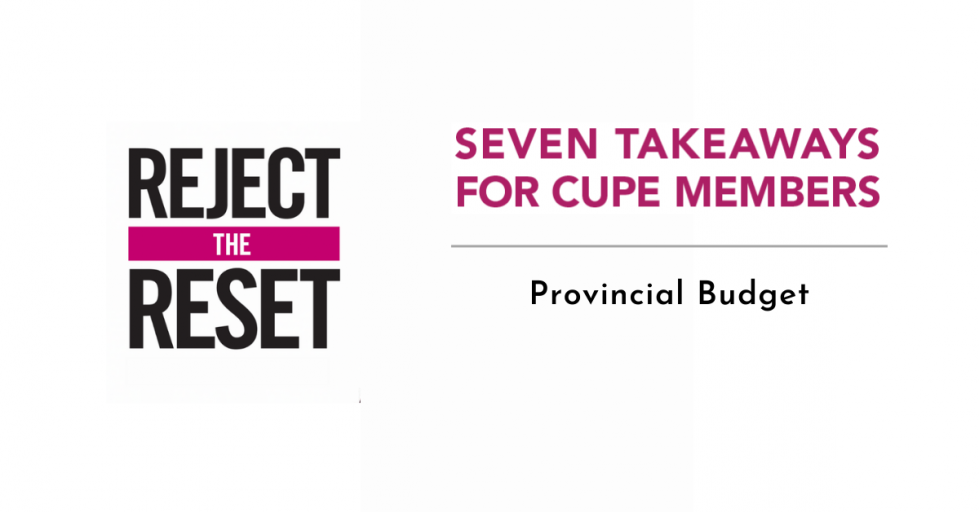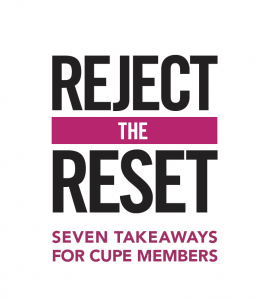Some of the biggest issues that we may face this year were not revealed in the specifics of the 2022-2023 provincial budget. The Furey government tailored their budget to try to pass it off as a good news story. CUPE members should be aware of these seven takeaways.
Download a printable copy of this leaflet.
- Centralization of health authorities into one provincial health authority
- Centralization will not save valuable health dollars for health care, nor will it result in better care.
- In Nova Scotia and Manitoba where centralization has been attempted, the outcome has been bad for local and rural health needs.
- The budget makes real cuts to program spending
- For most departments, such as health and social services, the amount of program spending was frozen at the 2021-2022 level.
- The Consumer Price Index rose 3.7% last year, so freezing funding to departments really means that they are getting only 96.3% of what they got last year. In real terms, that’s a cut.
- The Furey government is planning freezes (cuts) every year until 2026-2027.
- A few departments did receive funding to keep up with inflation. K-12 education received a 3.8% increase, so it’s one of the only departments to undergo a true “freeze”.
- The premier’s office got a big increase, receiving 10% additional funding
- The Furey government is intentionally predicting less revenue this year
- The government has projected the average price of oil for the year to be 25% less than what most banks are predicting.
- If the price of oil keeps up as predicted, it could mean the province will get more than $200 million in royalties.
- There is money in the budget to pay for real wage increases for public sector workers – the Furey government is just trying to hide it.
- Government spending on public sector salaries and benefits fell by 17% since 2015
- The 2015-2016 budget for salaries and employee benefits was $3.5 billion (in 2015 dollars).
- The 2022-2024 budget for salaries and employee benefits also allocates $3.5 billion (in 2022 dollars).
- In seven years, even though the dollar figure has remained the same, $3.5 billion is worth 17% less today because of inflation.
- It’s simple: public sector workers’ salaries and benefits have not caused a “fiscal crisis”. The crisis is that workers’ salaries and benefits have been cut by so much.
- Furey’s plan to privatize publicly owned assets is a bad idea
- The budget lists three Crown corporations (Atlantic Lottery Corporation, Nalcor Energy, and NL Liquor) as contributing $497 million to government coffers last year.
- Over the coming year, the amount that these three Crown corporations are expected to contribute is nearly double last year and could bring in $914 million.
- Why would anyone think selling-off and privatizing publicly owned assets is a good idea?
- Balanced budget legislation is bad public policy
- Balanced budget legislation could freeze growth of public sector employment, freeze wages and benefits, and cut public services and employment during an economic downturn.
- CUPE is watching closely with our allies in the NL Federation of Labour to see if such legislation would attempt to limit or withdraw collective bargaining rights.
- This legislation is a “political tool” to pretend to tie the hands of the current and/or future governments – but like any legislation passed by the House of Assembly, it can be overturned by a majority vote.
- Privatization and centralization of public services
- The budget mentions the PERT Report, the Review of Provincial Assets (Rothschild Bank Report), and the NL Health Accord.
- All these reports are political tools the Furey government is using to soften up Newfoundlanders and Labradorians to believe that there is no alternative to cutting services and selling our public assets to the highest, most well-connected bidder.
Download a printable copy of this leaflet.


